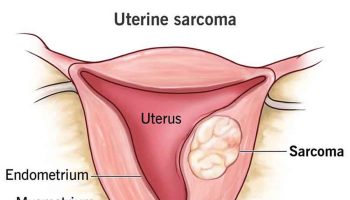Aphantasia
Aphantasia is defined as congenital inability to experience voluntary mental imagery or the inability to form voluntary visual imagery, with intact semantic memory and vision 1. A study of 21 cases of aphantasia found that the majority of participants had some experience of visual imagery from dreams or involuntary “flashes” of imagery, for example, at sleep onset 2. Thus, their aphantasia involved a deficiency of voluntary imagery rather than a total absence 2. Individuals affected by aphantasia cannot experience the sensory qualities of objects that are not physically presented to them. In one recent study, an aphantasic individual performed significantly worse than controls on the most difficult visual working memory trials 3. Her performance on a task designed to involve mental imagery did not differ from controls. However, she lacked meta-level cognitive insight into her performance, which is consistent with the current theory. Aphantasic individuals are able to use verbal intentions in goal-directed behavior, schematic spatial imagery, and non-imaged action plans as alternative control systems 4.
Although the phenomenon was already described nearly 150 years ago 5, it has recently (re)gained public and scientific interest 6. A study by Zeman et al. 1 described a case of acquired aphantasia as a result of a coronary angioplasty procedure. They found that the patient behaved accurately on tasks of visual mental imagery and visual memory, from which they concluded that he must have utilized alternative cognitive processes, rather mental imagery, to perform these tasks. fMRI data showed that he relied more heavily on frontal brain areas, whereas in controls a posterior network of brain regions was more active, corroborating the idea that he made use of an alternative cognitive strategy. Another study described a group of twenty one individuals who had never experienced voluntary mental imagery at any moment during their lifetime 6. Many of these congenital aphantasics self-reported mood-related or cognitive difficulties.
Bainbridge and colleagues 7 discover that aphantasics show impairments in object memory, drawing fewer objects containing less color. Furthermore, they found evidence for greater dependence on symbolic information in the task, with more text in their drawings and common self-reporting of verbal strategies. However, aphantasics show no impairments in spatial memory, positioning objects at accurate locations with the correct sizes. Further, aphantasics show sign ificantly fewer errors in memory, with fewer falsely recalled objects, and less correction of their drawings. Importantly, Bainbridge et al 7 observe no significant differences between controls and aphantasics when drawing directly from an image, indicating these differences are specific to memory and not driven by differences in effort, drawing ability, or perceptual processing. Collectively, these results point to a dissociation in imagery between object-based information and spatial in formation. In addition to selective deficits in object memory over spatial memory, aphantasics subjectively report a lower preference for object imagery compared to spatial imagery in the Object-Spatial Imagery Questionnaire (OSIQ) 8. This supports the previous findings in the smaller dataset (N=15) of Keogh and Pearson 9, which first reported differences in Object-Spatial Imagery Questionnaire (OSIQ) measures deficits. This being said, while the authors observed a deficit in object memory for aphantasics, it was not a complete elimination of object memory abilities. Aphantasics were s till able to draw a handful of objects from memory (five per image). While this moderate performance could be due to some preserved ability at object memory, this performance could also reflect the use of verbal lists of objects combined with intact, accurate spatial memory to reconstruct a scene. Future work will need to directly compare visual and verbal strategies, and push the limits to see what occurs when there is more visual detail than can be supported by verbal strategies 7.
Research on aphantasia is still very much in its infancy, so there is still a great deal to learn. Many people with aphantasia do not even realize that their experience is any different than that of other people. It is simply part of their existence and has little impact on how they live their lives.
- Zeman, A. Z. J., Della Sala, S., Torrens, L. A., Gountouna, V. E., McGonigle, D. J., & Logie, R. H. (2010). Loss of imagery phenomenology with intact visuo-spatial task performance: A case of “blind imagination”. Neuropsychologia, 48(1), 145–155.[↩][↩]
- Zeman A., Dewar M., Della Sala S. Reflections on aphantasia. Cortex. 2016;74:336–337. doi: 10.1016/j.cortex.2015.08.015[↩][↩]
- Jacobs C., Schwarzkopf D.S., Silvanto J. Visual working memory performance in aphantasia. Cortex. 2018;105:61–73. doi: 10.1016/j.cortex.2017.10.014.[↩]
- Marks DF. I Am Conscious, Therefore, I Am: Imagery, Affect, Action, and a General Theory of Behavior. Brain Sci. 2019;9(5):107. Published 2019 May 10. doi:10.3390/brainsci9050107 https://www.ncbi.nlm.nih.gov/pmc/articles/PMC6562971[↩]
- Statistics of Mental Imagery. Francis Galton (1880). Mind, 5,301-318.[↩]
- Zeman, A., Dewar, M., & Della Sala, S. (2015). Lives without imagery – congenital aphantasia. Cortex, 73, 378e380.[↩][↩]
- Bainbridge WA, Pounder Z, Eardley AF, Baker CI. Quantifying Aphantasia through drawing: Those without visual imagery show deficits in object but not spatial memory. bioRxiv; 2019. DOI: 10.1101/865576 https://doi.org/10.1101/865576[↩][↩][↩]
- Blajenkova, O., Kozhevnikov, M., & Motes, M.A. Object-spatial imagery: A new self-report 674 imagery questionnaire. Appl. Cogn. Psychol. 20, 239-263 (2006).[↩]
- Keogh, R., & Pearson, J. The blind mind: No sensory visual imagery in aphantasia. Cortex 105, 53-60 (2017).[↩]





